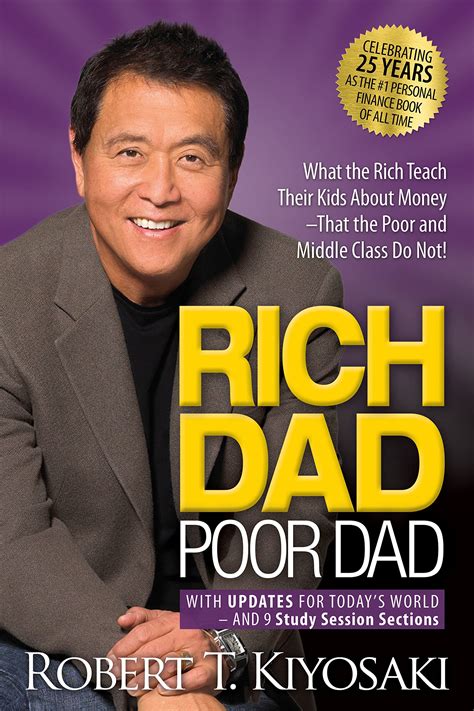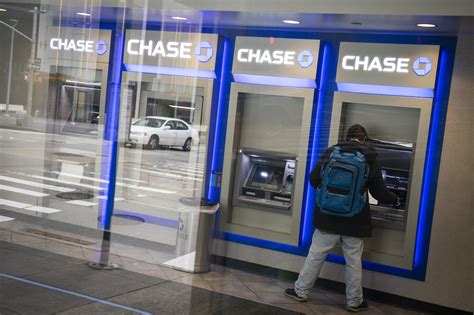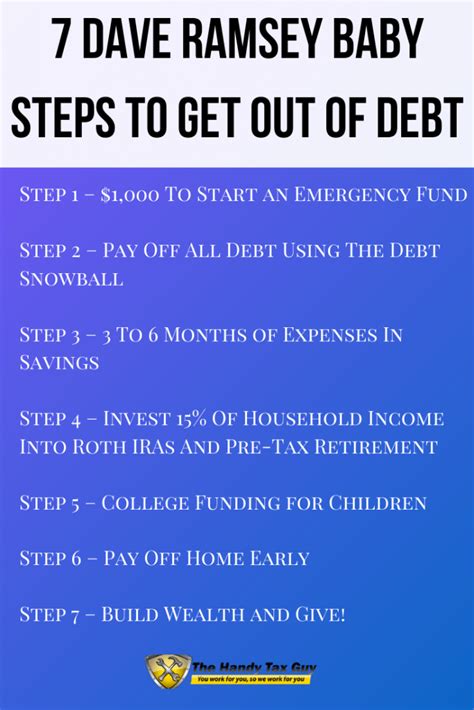
A significant market downturn is on the horizon, according to Robert Kiyosaki, author of “Rich Dad Poor Dad,” who is predicting the “biggest crash ever.” Kiyosaki is urging investors to buy gold, silver, and Bitcoin as safe-haven assets to protect themselves from what he believes is an impending economic catastrophe exacerbated by reckless government spending and the Federal Reserve’s policies.
Robert Kiyosaki, the author of the bestselling personal finance book “Rich Dad Poor Dad,” has once again sounded the alarm about an imminent and catastrophic market crash, which he dubs the “biggest crash ever.” Citing what he perceives as reckless government spending, irresponsible monetary policy by the Federal Reserve, and a general overvaluation of assets, Kiyosaki is urgently advising investors to seek refuge in alternative investments like gold, silver, and Bitcoin.
Kiyosaki’s dire forecast isn’t new. He has consistently warned about the fragility of the current financial system for years, often pointing to the unsustainable levels of debt and the potential for a major correction. This latest warning, however, carries a renewed sense of urgency, particularly in light of recent economic uncertainties, including rising inflation, increasing interest rates, and geopolitical tensions.
“The problem we have is debt,” Kiyosaki stated in a recent media appearance. He argues that the massive amount of debt accumulated by governments and individuals alike is creating a bubble that is destined to burst. This burst, he believes, will trigger a widespread economic collapse that will dwarf previous market crashes.
Kiyosaki’s concerns center around the following key factors:
- Government Debt: He views the escalating national debt of the United States and other countries as a ticking time bomb. He believes that governments are spending money they don’t have, leading to inflation and a devaluation of currencies.
- Federal Reserve Policy: Kiyosaki is highly critical of the Federal Reserve’s monetary policies, particularly its quantitative easing programs and low-interest-rate environment, which he believes have artificially inflated asset prices and created a false sense of economic prosperity. He argues that the Fed’s recent interest rate hikes, while intended to curb inflation, could trigger a recession and exacerbate the debt crisis.
- Inflation: He sees inflation as a direct consequence of excessive government spending and loose monetary policy. He believes that inflation erodes the purchasing power of the dollar and other fiat currencies, making it essential for investors to protect their wealth by investing in assets that hold their value during inflationary periods.
- Asset Bubbles: Kiyosaki believes that many asset classes, including stocks and real estate, are currently in a bubble, meaning that their prices are significantly higher than their intrinsic value. He argues that these bubbles are unsustainable and are likely to burst, leading to significant losses for investors.
To mitigate the potential impact of the coming crash, Kiyosaki is advocating a strategy of diversification into tangible assets, specifically gold, silver, and Bitcoin.
- Gold and Silver: He views gold and silver as traditional safe-haven assets that have historically maintained their value during economic downturns and periods of inflation. He argues that these precious metals offer a hedge against currency devaluation and provide a store of value when other assets are declining.
- Bitcoin: Kiyosaki is a vocal proponent of Bitcoin, viewing it as a decentralized, digital store of value that is independent of government control and monetary policy. He believes that Bitcoin offers a hedge against inflation and currency debasement and has the potential to appreciate significantly in value as more investors adopt it as a safe-haven asset. He often refers to Bitcoin as “digital gold.”
While Kiyosaki’s warnings are often stark and alarmist, they resonate with many investors who are concerned about the current state of the economy and the potential for a market correction. His views have gained a significant following, particularly among those who are skeptical of traditional financial institutions and government policies.
It’s important to note that Kiyosaki’s predictions are not universally accepted. Many economists and financial analysts disagree with his assessment of the economic outlook and his recommendations for investment strategies. They argue that the current economic situation is not as dire as Kiyosaki portrays it and that traditional investment strategies, such as diversification across stocks and bonds, are still the most prudent approach for most investors.
However, even those who disagree with Kiyosaki’s specific predictions acknowledge that there are significant risks facing the global economy and that investors should be prepared for potential market volatility. Prudent financial planning, diversification, and a long-term investment horizon are always essential, regardless of the specific economic forecast.
The Case for Gold and Silver
Kiyosaki’s emphasis on gold and silver as safe-haven assets is rooted in their historical performance during periods of economic uncertainty. Throughout history, these precious metals have been seen as stores of value that tend to hold their own or even appreciate when other assets are declining.
- Inflation Hedge: Gold and silver are often considered hedges against inflation because their prices tend to rise when the purchasing power of fiat currencies is eroding. This is because the supply of precious metals is limited, while the supply of fiat currencies can be increased at will by central banks.
- Safe-Haven Asset: During times of economic turmoil, investors often flock to safe-haven assets like gold and silver, driving up their prices. This is because these assets are seen as less risky than stocks, bonds, and other investments that are more susceptible to market volatility.
- Store of Value: Gold and silver have historically served as stores of value, meaning that they can be held for long periods of time without losing their purchasing power. This makes them attractive to investors who are looking to preserve their wealth over the long term.
The Bitcoin Argument
Kiyosaki’s advocacy for Bitcoin is based on its unique characteristics as a decentralized, digital currency. He believes that Bitcoin offers several advantages over traditional fiat currencies and other investment assets.
- Decentralization: Bitcoin is not controlled by any government or central bank, making it resistant to censorship and manipulation. This is a key advantage in Kiyosaki’s view, as he believes that governments and central banks are often responsible for economic instability and currency debasement.
- Limited Supply: The total supply of Bitcoin is capped at 21 million coins, making it a scarce asset. This scarcity, Kiyosaki argues, will drive up the price of Bitcoin as demand increases.
- Inflation Hedge: Like gold and silver, Bitcoin is often seen as a potential hedge against inflation. Because its supply is limited, it is not subject to the same inflationary pressures as fiat currencies.
- Digital Gold: Kiyosaki often refers to Bitcoin as “digital gold,” suggesting that it can serve the same function as gold as a store of value and a hedge against economic uncertainty.
Criticisms and Counterarguments
While Kiyosaki’s warnings and recommendations have gained a significant following, they have also been met with criticism from economists and financial analysts. Some of the common counterarguments include:
- Exaggerated Risks: Critics argue that Kiyosaki often exaggerates the risks facing the global economy and that his predictions of a catastrophic market crash are overly alarmist. They point to the resilience of the economy and the ability of governments and central banks to manage economic crises.
- Oversimplified Solutions: Some analysts believe that Kiyosaki’s solutions, such as investing solely in gold, silver, and Bitcoin, are overly simplistic and do not take into account the complexities of financial planning. They argue that diversification across a range of asset classes is a more prudent approach for most investors.
- Volatility of Bitcoin: While Kiyosaki touts Bitcoin as a safe-haven asset, critics point to its extreme volatility. The price of Bitcoin has experienced significant swings in recent years, making it a risky investment for those who are not comfortable with high levels of risk.
- Lack of Regulation: The cryptocurrency market is largely unregulated, which critics argue makes it vulnerable to fraud and manipulation. They warn that investors could lose their entire investment in Bitcoin if a cryptocurrency exchange collapses or if they fall victim to a scam.
- Gold’s Underperformance: While gold is traditionally viewed as a safe haven, its performance in recent years has not always matched expectations. During some periods of economic uncertainty, gold prices have remained flat or even declined.
Conclusion
Robert Kiyosaki’s latest warning about an impending market crash underscores his long-held concerns about the stability of the global financial system. While his predictions are often controversial and not universally accepted, they serve as a reminder of the importance of prudent financial planning and the need to be prepared for potential economic volatility. Investors should carefully consider Kiyosaki’s recommendations in light of their own risk tolerance and financial goals, and they should consult with a qualified financial advisor before making any investment decisions. The core of Kiyosaki’s argument rests on skepticism of governmental financial management and fiat currency’s long-term viability, a perspective that resonates with a substantial segment of the investing public concerned about inflation and economic uncertainty. Whether his specific predictions materialize remains to be seen, but his consistent warnings serve as a continuous reminder of the potential vulnerabilities in the global financial landscape. He consistently advocates for financial literacy and independent financial decision-making, empowering individuals to take control of their financial futures amidst potential economic turmoil.
Frequently Asked Questions (FAQ)
-
Why does Robert Kiyosaki predict a major market crash?
Robert Kiyosaki predicts a significant market downturn due to what he perceives as reckless government spending, unsustainable levels of debt, and the Federal Reserve’s monetary policies, which he believes have created asset bubbles. He argues that these factors will eventually lead to a collapse of the financial system, resulting in the “biggest crash ever.” Kiyosaki believes the massive accumulation of debt by governments and individuals is creating a bubble destined to burst. The Federal Reserve’s low-interest-rate environment artificially inflates asset prices, making them unsustainable.
-
What assets does Kiyosaki recommend to protect against this crash?
Kiyosaki advises investors to buy gold, silver, and Bitcoin as safe-haven assets. He believes these assets will maintain or increase their value during economic downturns and periods of inflation. He views gold and silver as traditional safe havens that hedge against currency devaluation. He sees Bitcoin as a decentralized, digital store of value independent of government control.
-
What are the criticisms of Kiyosaki’s predictions and recommendations?
Critics argue that Kiyosaki exaggerates the risks facing the global economy and that his predictions are overly alarmist. They also believe his solutions are too simplistic and do not account for the complexities of financial planning. Some analysts point to the volatility of Bitcoin and the underperformance of gold during certain periods of economic uncertainty. Additionally, some concerns have been raised regarding the lack of regulation in cryptocurrency markets.
-
How does Kiyosaki view the role of the Federal Reserve in the current economic situation?
Kiyosaki is highly critical of the Federal Reserve’s monetary policies, particularly its quantitative easing programs and low-interest-rate environment. He believes these policies have artificially inflated asset prices and created a false sense of economic prosperity. He suggests that recent interest rate hikes, intended to curb inflation, could trigger a recession and worsen the debt crisis. He believes the Fed is creating more problems than solutions with its actions.
-
Is Kiyosaki’s advice suitable for all investors?
Kiyosaki’s advice may not be suitable for all investors, as it is based on a specific and often controversial view of the economic outlook. Investors should carefully consider his recommendations in light of their own risk tolerance, financial goals, and investment horizon. Consulting with a qualified financial advisor is crucial before making any investment decisions. Prudent financial planning, diversification, and a long-term investment horizon are essential regardless of specific economic forecasts.
Expanded Context and Deeper Analysis
To fully understand Kiyosaki’s perspective, it’s important to delve deeper into the historical context and the economic theories that underpin his arguments. His views are rooted in a blend of Austrian economics, libertarianism, and a general distrust of centralized power.
Austrian Economics: Austrian economics emphasizes the importance of individual action, free markets, and limited government intervention. It views the economy as a complex, dynamic system that is best understood through logical deduction rather than empirical observation. Austrian economists are often critical of government spending, central banking, and fiat currencies.
Libertarianism: Libertarianism is a political philosophy that advocates for individual liberty, limited government, and free markets. Libertarians believe that individuals should be free to make their own choices without government interference, as long as they do not harm others. Kiyosaki’s emphasis on financial independence and self-reliance aligns with libertarian principles.
Distrust of Centralized Power: Kiyosaki’s warnings about government debt and Federal Reserve policy reflect a broader distrust of centralized power. He believes that governments and central banks are often motivated by self-interest rather than the public good, and that their actions can have unintended and harmful consequences.
Historical Parallels: Kiyosaki often draws parallels between the current economic situation and past periods of economic crisis, such as the Great Depression and the hyperinflationary episodes in Weimar Germany and Zimbabwe. He believes that the current levels of debt and money printing are unsustainable and will inevitably lead to a similar crisis.
The Role of Financial Literacy: A central theme in Kiyosaki’s work is the importance of financial literacy. He believes that most people are not taught how to manage their money effectively and are therefore vulnerable to financial exploitation. He advocates for financial education from a young age and encourages people to take control of their financial futures.
Analyzing the Components of Kiyosaki’s “Crash” Scenario
To critically assess Kiyosaki’s predictions, it’s necessary to examine the individual components of his “crash” scenario:
- Government Debt: The national debt of the United States and other countries is indeed at historically high levels. However, whether this debt is sustainable depends on a number of factors, including economic growth, interest rates, and the willingness of investors to continue lending money to governments. Some economists argue that the debt is manageable as long as interest rates remain low and the economy continues to grow. Others warn that the debt could become unsustainable if interest rates rise or if the economy experiences a prolonged recession.
- Federal Reserve Policy: The Federal Reserve’s monetary policies have been the subject of much debate in recent years. Critics argue that the Fed’s quantitative easing programs have inflated asset prices and created moral hazard, encouraging excessive risk-taking. Supporters argue that the Fed’s policies have helped to prevent a deeper recession and have supported economic growth. The Fed’s recent interest rate hikes are intended to curb inflation, but they also carry the risk of slowing down the economy and triggering a recession.
- Inflation: Inflation has been a major concern for investors and policymakers in recent years. The COVID-19 pandemic and the subsequent supply chain disruptions have contributed to rising prices. The Federal Reserve is trying to combat inflation by raising interest rates, but this could also slow down the economy. Whether inflation will persist or eventually subside is a key question for the economic outlook.
- Asset Bubbles: There is evidence that some asset classes, such as stocks and real estate, may be overvalued. However, determining whether an asset is truly in a bubble is difficult, as it requires predicting future market sentiment. Even if asset bubbles do exist, it is impossible to know when they will burst.
Alternative Perspectives on the Economic Outlook
It’s important to consider alternative perspectives on the economic outlook. Many economists and financial analysts believe that the current economic situation is not as dire as Kiyosaki portrays it. They argue that the economy is resilient and that governments and central banks have the tools to manage economic challenges. They also point to positive factors, such as low unemployment rates and strong corporate earnings.
Some economists argue that the recent inflation is temporary and will subside as supply chain disruptions ease. Others believe that the Federal Reserve’s interest rate hikes will be effective in curbing inflation without triggering a recession. Still others argue that the government debt is manageable as long as the economy continues to grow.
Diversification as a Prudent Strategy
Regardless of one’s view on the economic outlook, diversification remains a prudent investment strategy. Diversifying across a range of asset classes, such as stocks, bonds, real estate, and commodities, can help to mitigate risk and improve returns over the long term.
While Kiyosaki advocates for investing in gold, silver, and Bitcoin, it’s important to remember that these assets can be volatile and may not be suitable for all investors. A well-diversified portfolio should include a mix of assets that are appropriate for one’s individual risk tolerance and financial goals.
Conclusion: Navigating Uncertainty with Informed Decisions
Robert Kiyosaki’s warnings about an impending market crash serve as a reminder of the inherent uncertainties in the global financial system. While his predictions are often controversial, they highlight the importance of financial literacy, prudent planning, and a healthy skepticism of conventional wisdom.
Investors should carefully consider Kiyosaki’s recommendations in light of their own risk tolerance and financial goals, and they should consult with a qualified financial advisor before making any investment decisions. Diversification, a long-term perspective, and a commitment to continuous learning are essential for navigating the complexities of the financial world. The current economic environment is marked by both challenges and opportunities. By staying informed, making sound financial decisions, and remaining adaptable to changing circumstances, investors can increase their chances of achieving their financial goals, regardless of what the future holds. Ultimately, the responsibility for one’s financial well-being rests with the individual, and a proactive approach to financial planning is the best defense against uncertainty. Furthermore, Kiyosaki’s strong focus on entrepreneurship and asset acquisition, beyond just precious metals and cryptocurrency, encourages a proactive and diversified approach to wealth building that goes beyond simply preparing for a crash. His emphasis is on building financial resilience through multiple income streams and strategic asset allocation.









